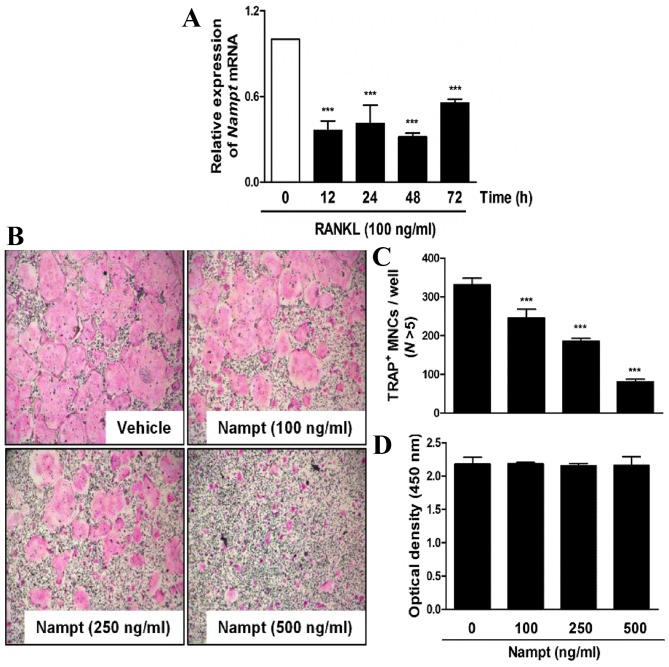Figure 1.
Nampt attenuates TRAP-positive osteoclast formation without cytotoxicity. (A) BMMs were cultured in the presence of M-CSF (30 ng/ml) and then stimulated with RANKL (100 ng/ml) for the indicated durations. Total RNA was isolated from cells using QIAzol reagent and Nampt mRNA levels were evaluated by reverse transcription-quantitative polymerase chain reaction. ***P<0.001 vs. control group. (B) BMMs were cultured for 3 days in the presence of M-CSF (30 ng/ml) and RANKL (100 ng/ml), with or without the indicated concentrations of Nampt. Cells were fixed, permeabilized and stained with TRAP solution. Images of TRAP+ cells were captured under a light microscope (magnification, ×5). (C) BMMs were seeded into a 96-well plate and cultured for 3 days in the presence of M-CSF (30 ng/ml) with the indicated concentrations of Nampt (100, 250 or 500 ng/ml). After 3 days, cell viability was analyzed by the XTT assay. (D) TRAP+ MNCs with >5 nuclei were counted as osteoclasts. ***P<0.001 vs. control group. BMMs, bone marrow macrophages; M-CSF, macrophage colony-stimulating factor; MNCs, mononucleated cells; N, nuclei; Nampt, nicotinamide phosphoribosyltransferase; RANKL, receptor activator of nuclear factor-κB ligand; TRAP, tartrate-resistant acid phosphatase.

